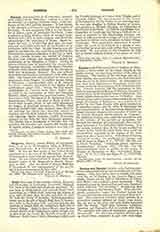

Cosenza, Archdiocese of (CUSENTINA), immediately subject to the Holy See. Cosenza is a city in the province of Calabria, Southern Italy, at the confluence of the Crati and the Busento. It was known to the ancients as Consentia, and was the capital of Bruttium. It was conquered (338 B.C.) by Alexander of Epirus, uncle of Alexander the Great. Later it adhered to King Pyrrhus, when he invaded Italy. Between 278-176 B.C. both Lucania and Bruttium acknowledged the supremacy of Rome. Alaric besieged the city (A.D. 410), but died there the same year and was buried in the bed of the Busento at its confluence with the Crati. In 902 Cosenza was pillaged by the Saracens, who were later expelled by the Normans but regained possession of the city in 1004. In 1130 Cosenza became the capital of Calabria Citeriore, now Cosenza, and thenceforth shared the vicissitudes of the Kingdom of Naples. Among its famous citizens may be mentioned the savant Gian Vincenzo Gravina, co-founder with Queen Christina of Sweden of the Roman Academy of the Arcadia in 1656 (see Roman Academies). The city suffered much from earthquakes, especially in 1184, 1658, and 1783. The Gospel was first preached in Cosenza by missionaries from Reggio; its earliest known bishop is Palumbus, a correspondent (599) of St. Gregory the Great. Cosenza was raised to the dignity of an archbishopric about 1050. Among the best known Archbishops of Cosenza have been: Ruffo, who perished in the earthquake of 1184; the Cistercian Martino (1285), a prolific but uncritical writer; Pirro Caracciolo (1452), the friend of St. Francis of Paula; Bartolommeo Fleury, who died at Rome (1495) in Castle e Sant’ Angelo, where he had been imprisoned for forgery of pontifical documents; Taddeo, later Cardinal, Gaddi (1535), who obtained from Paul IV the privilege by which the cathedral canons of Cosenza wear the choir habit of the Vatican basilica; and Giuseppe Maria Sanfelice (1650), frequently charged by the Holy See with diplomatic missions. The diocese has a population of 159,500, with 109 parishes, 264 churches and chapels, 200 secular and 16 regular priests, 2 religious houses of men and 5 of women.
U. BENIGNI

